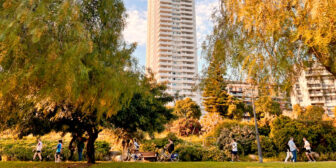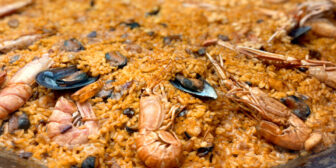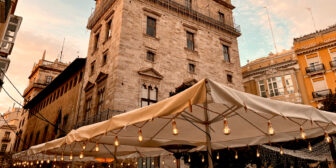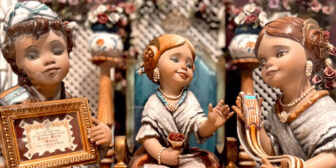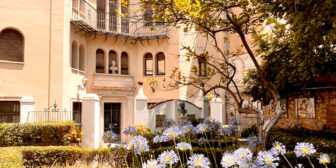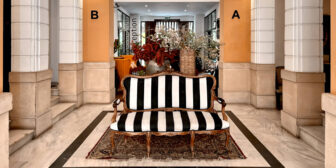Offering a glimpse into the city’s rich religious and cultural heritage, Valencia’s churches are among the city’s most striking attractions. From the towering Gothic Cathedral to the vibrant frescoes of the Church of San Nicolás, each church has its unique charm and character.
Beyond their role as places of worship, Valencia’s churches are also important cultural and historical landmarks that have played a significant role in shaping the city’s identity. Personally, I enjoy taking a glimpse inside to marvel at their beauty and briefly escape the hustle and bustle of the street. Here I’ll be covering the most captivating churches in Valencia and what makes each of them special.
In This Article
Cathedral of Valencia
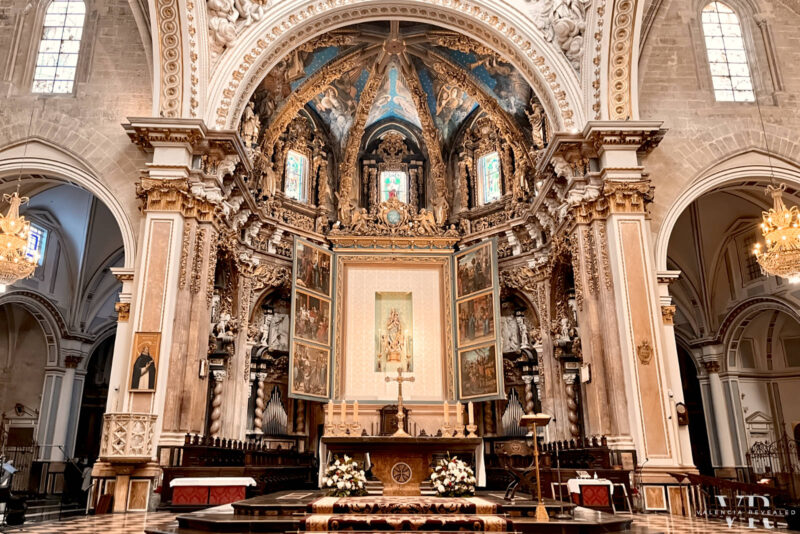
Valencia’s Cathedral, also known as St Mary’s Cathedral, is a magnificent building that dates back to the 13th century. Situated in the heart of the Old Town the cathedral was built on the site of an Arab Mosque soon after the Reconquista.
Built in Gothic-style with Romanesque to Baroque elements, one of its most unique features is that each of the three gates is in a different architectural style.
The cathedral houses many artefacts and bones of saints, as well as paintings by renowned artists such as Goya and Juan de Juanes.
However, the most important artefact inside Valencia’s cathedral is the Holy Grail, on display in one of the chapels. Valencia is one of several cities around the world claiming to have the much sought-after treasure and its claims seems to be endorsed by the Vatican.
If you like amazing panoramic views, do not hesitate to climb to the top of the Miguelete tower. The 207 steps are not an easy climb, but the views are worth it.
Basilica of Our Lady of the Forsaken
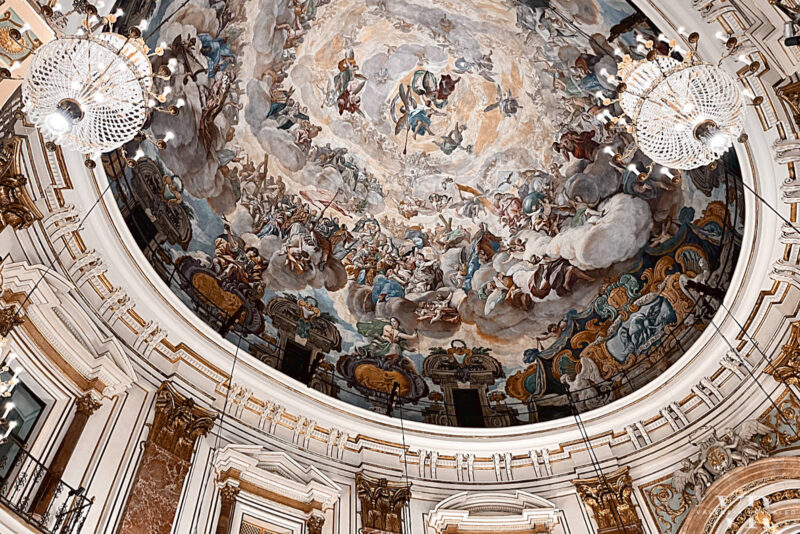
The Basilica of Our Lady of the Forsaken is a real gem and definitely worth a visit. It was built in the 17th century as the first Baroque church in Valencia. It was also one of the first Baroque churches in Spain.
One thing that sets this basilica apart from other churches in the Old Town is that it was actually built new from the ground up, rather than on top of an existing mosque or temple, a common practice back in the day.
The Basilica of Our Lady of the Forsaken is located right behind the cathedral and is connected to it by a bridge, which is quite unusual.
One of the most beautiful features of this basilica is the oval dome that’s slightly off-center. This dome is decorated with stunning frescoes and it’s out of this world.
This is the most popular church in Valencia and it’s basically impossible to walk in during mass and not find it filled with people singing hymns together.
If you happen to visit Valencia during Christmas, be sure to check out the chapel behind the altar. You can access it via a staircase and it’s where they display the nativity scene.
Church of San Juan del Hospital
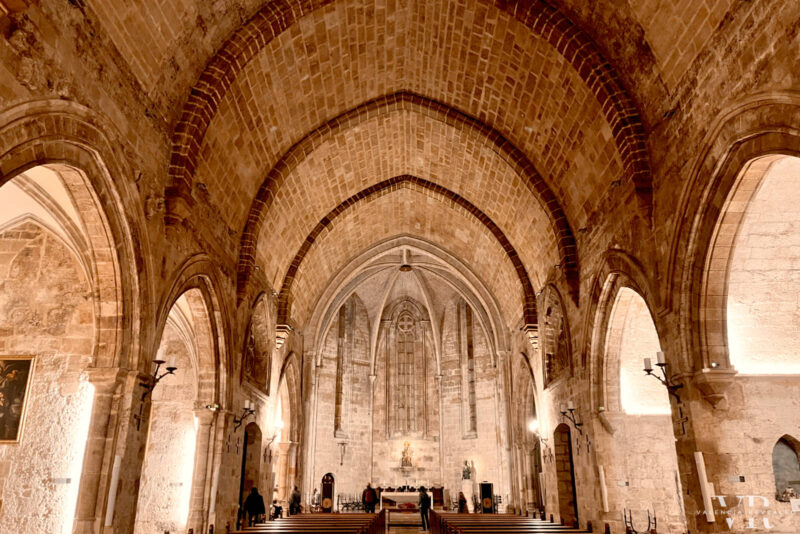
The Church of San Juan del Hospital in Valencia is the oldest church in Valencia. It was built in the 13th century by the Knights Hospitaller, today known as the Order of Malta, on land granted by King Jaime I as a token of appreciation for the order’s assistance during the Reconquista of Valencia.
The church’s was built in austere Romanesque style. Gothic elements were added later on, including a quite unique chapel heavily ornate with white and blue sgraffito, similar to the one in the Church of San Esteban.
During the Spanish Civil War, the church was looted, burnt, and almost demolished.
This church hosts the only medieval cemetery in Valencia as well as ruins of the Roman circus of Valentia, adding an extra layer of historical significance to the place.
The entrance to the church is through a secluded courtyard, which is quite unusual, but special at the same time. It’s easy to miss the entrance, but once you step inside, you’ll be transported back in time.
Church of San Nicolás
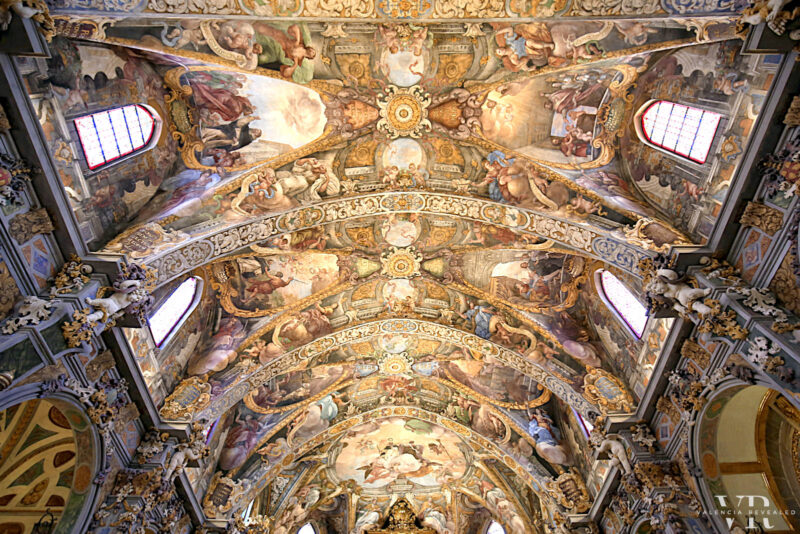
The Church of San Nicolás de Bari and San Pedro Mártir in Valencia is a stunning masterpiece that has earned the nickname “Valencian Sistine Chapel” for its magnificent frescoes and decorations.
Originally built in the 13th century on the site of an Arab mosque, the church was renovated in the 15th century by the influential Borja family, who added the Gothic-style elements.
As you walk inside, you are treated to an awe-inspiring display of 17th century Baroque art, including intricate frescoes depicting the lives of Saint Nicholas and Saint Peter Martyr.
Recently restored to its full glory, the church is now more beautiful than ever and attracts countless visitors each year.
Despite its popularity as a tourist destination, the church still holds regular masses and religious services. Visitors can explore the interior on their own or with a guided tour.
Finding the entrance can be a bit tricky, as it is tucked away in a nondescript alley off Calle Caballeros. So I recommend you look for the signs, not the church itself, as you won’t be able to see it from this street.
Church of Santa Catalina
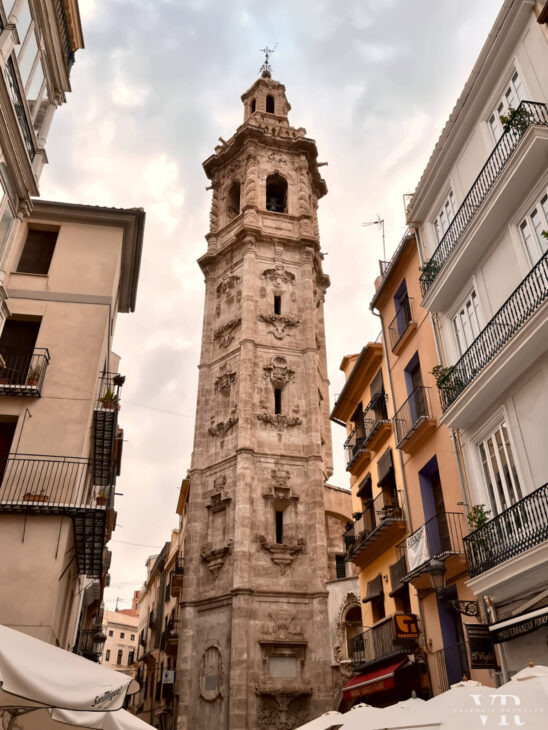
The impressive Church of Santa Catalina was constructed in the 13th century on the site of a former mosque.
Throughout its history, the church suffered from several devastating fires, the most notable of which occurred in the 16th century. During that time, most of the interior had to be rebuilt, and that’s when the church was given its beautiful Baroque style.
One thing that sets this church apart from others in Valencia is that its interior doesn’t have many paintings or much color. However, the grand architecture and historical significance more than make up for that.
Unfortunately, during the Spanish Civil War, the Church of Santa Catalina was burned down once again and it was carefully restored in the 1950s.
One of the highlights of this church is the imposing bell tower, which has a hexagonal base and five levels. Built in the 17th century on the site of a minaret, the tower has an distinct Baroque appearence.
I highly recommend climbing the tower as the views from the top are simply stunning. However, please exercise caution both going up and coming down.
Church of Santos Juanes
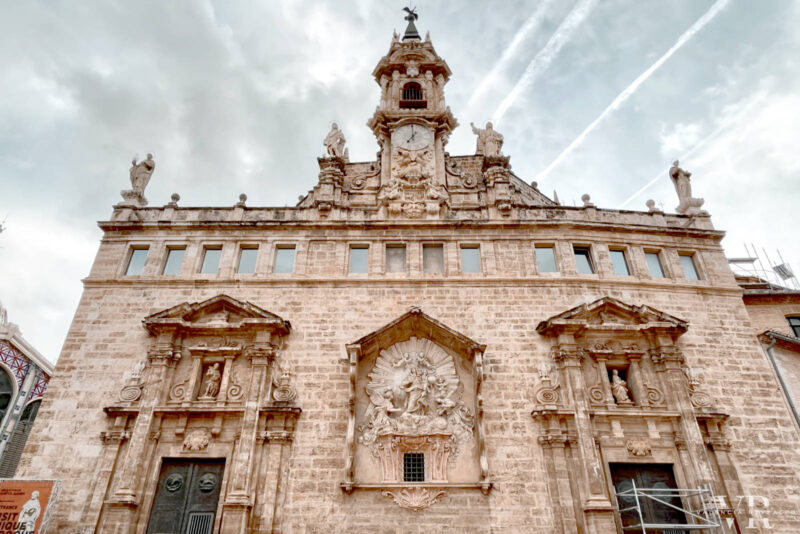
Just like many other churches in Valencia, the Church of Santos Juanes was built way back in the 13th century on the site of an old Arab mosque. The main difference is that this church was situated outside the Muslim city walls.
The Church of Santos Juanes is now right next to La Lonja and Mercado Central. What’s interesting is that the facade facing La Lonja is the most beautiful one, in spite of not being the main one, featuring a large and unusual stone altarpiece depicting biblical scenes.
This church has had a pretty rough go of it over the centuries. Between the 14th and 16th centuries, it burned down three times and each time it had to be reconstructed. This is how it got its Gothic style.
Towards the end of the 17th and the beginning of the 18th century, the church was given a Baroque makeover. This resulted in the addition of gorgeous frescoes and opulent plaster statues reminiscent of those found in the churches in Rome.
During the Spanish Civil War the church suffered a fourth fire that lasted for three days and three nights. In this fire, many works of art were lost forever and the frescoes decorating the church were covered in black smoke.
Iglesia de Santos Juanes, is currently undergoing a painstaking restoration project using an innovative technique that implies the transfer of digitally processed images. Works are expected to be completed by 2026. For now, many of the frescoes are still covered in scaffolding, but the church is open to the public and can be visited.
Church of San Esteban
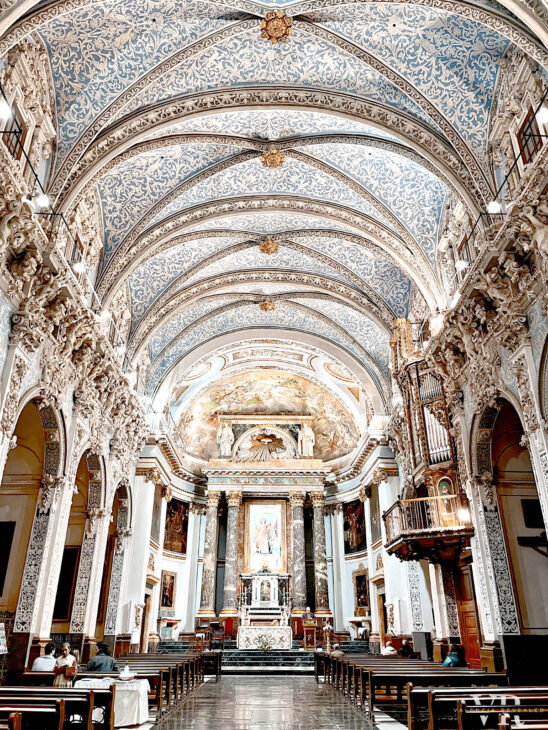
The splendid Church of San Esteban in Valencia was also founded in the 13th century on the site of an old mosque.
While the church has a clear Gothic style, with a single nave, so characteristic of Valencia’s churches, it underwent extensive renovations during the 17th century. These renovations significantly altered the church’s original appearance, as Valencia embraced the new Baroque style.
Walk inside this church and you’ll be treated to some of the most impressive interiors in the city. The stunning plasterwork depicting beautiful cherubs, as well as the sgraffito with a blue background and white undulating vines are out of this world.
The church’s baptismal font at the back of the church is particularly noteworthy, as it is where San Vicente Ferrer, a famous local saint, was baptized. His baptism is still celebrated every January in Valencia with a colorful procession and the Church of San Esteban remains the locals’ favorite place to baptize their children.
Beautifully restored in recent years, this church only opens for mass in late afternoon and Sunday mornings. It’s also a bit out of the way and not precisely easy to find. However, it’s centrally located, just a couple of minutes away from the cathedral, and I definitely recommend you check it out.

